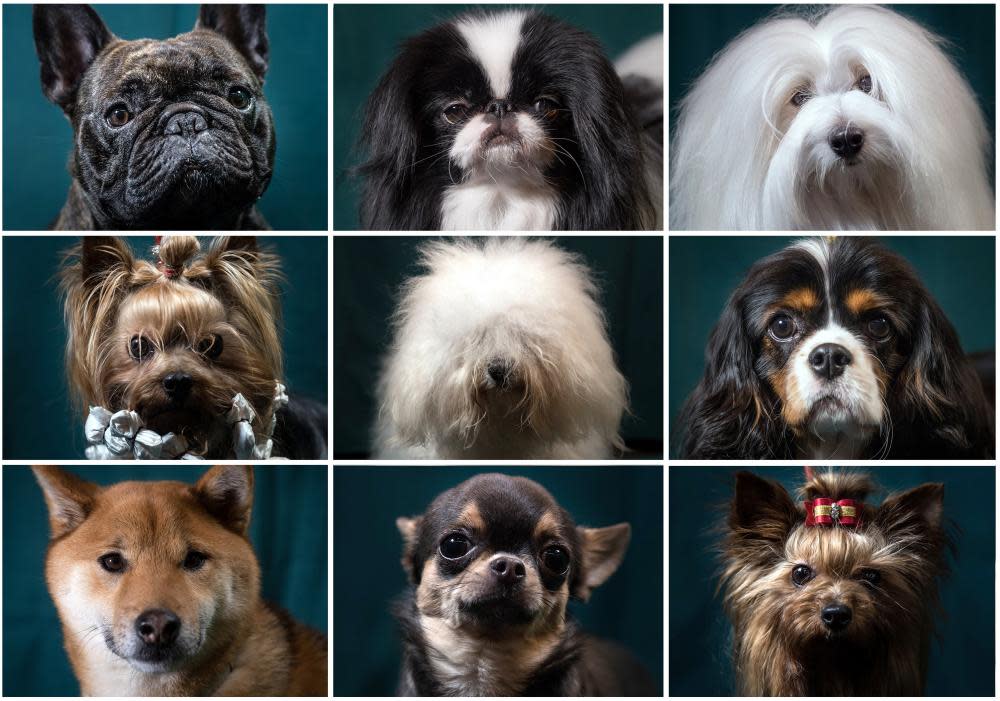Bow wow: scientists create definitive canine family tree

It sounds like the ultimate shaggy dog story, but scientists say they have created the definitive canine family tree.
The study not only sheds light on the evolution of different breeds, but also reveals why certain breeds are prone to the same diseases even though they appear to be very different.
“[We wanted] to figure out how breeds were formed and that is not something that has been done in a large and systematic way before,” said Elaine Ostrander, co-author of the research from the US National Institutes of Health (NIH).
“We now have a great way to study and to understand how various disease mutations have migrated around dog breeds,” she added.
Writing in the journal Cell Press, the researchers reveal how they compared 170,000 points in the genomes of 1,326 dogs from 161 of the 350 or so modern canine breeds in order to explore their genetic similarity.
While, unsurprisingly, dogs of the same breed were found to be extremely closely related, the analysis also shed light on the relationships between different breeds. Of the 161 breeds studied, 150 clustered into just 23 different groups. .
The 23 groups appear to be largely defined by geographical location, physical attributes or skills, such as the ability to hunt by scent. The researchers point out that it was not until about 300 years ago that the development of breeds began to be driven by fashion, resulting in the myriad modern breeds seen today within each group.
“When humans started living with dogs, much about life itself was less about the aesthetics and more about survival and making life easier for ourselves” said Dayna Dreger, another author of the research from the NIH.
The team also looked at which breeds in different groups share particular patterns in their DNA, shedding further light on breed evolution.
Among the findings, the results reveal that while the Labrador is primarily a product of breeding within the retriever group, its close relative the golden retriever differs chiefly by sharing a dash of genetic material with the Irish setter, English setter and Airedale terrier. Meanwhile, the split within the retriever group that resulted in flat-coated retrievers and golden retrievers was pinpointed from the genetic data to 1895 – tying in neatly with historical records of selective breeding for the dogs between 1868 and1890.
But there were surprises, too. Particular traits such as herding or very large size were found to have emerged independently multiple times. In addition, the “UK rural” and “Mediterranean” groups of breeds were both found to contain speedy, sharp-eyed sighthounds as well as large, solid, flock-guarding breeds – for example, the border collie and the greyhound both appear within the “UK rural” genetic group. While the discovery initially had the team scratching their heads, the finding, says Dreger, suggests that dogs initially used by humans for hunting might have later been bred to fill a protective role once agriculture caught on.
There are also tantalising paw-prints of an ancient migration.
Archaeological findings have previously suggested that early settlers who arrived in the US more than 10,000 years ago by crossing the Bering land bridge took their canine companions with them – although these were thought to have been completely superseded by animals brought during European colonisation.
But with three of the 23 groups found to largely encompass breeds with central and south American origins, the research suggests that there might be life in the old dogs yet.
“If we have this genetic signature that is saying something about these central American dogs is different and unique [compared to] the modern European breeds that we have, the next question we have is how did they get there?,” said Dreger. “If they didn’t get there with the European colonisation of central America, then they could have been with the people that were there prior to European colonisation.”
The research also sheds light on a number of conundrums, including why the Nova Scotia duck tolling retriever is prone to an eye disease typically found in herding breeds such as collies. To their surprise, the team discovered that various sheepdog breeds have contributed to the genetic makeup of the “Toller”, and probably introduced the genetic mutation responsible for the disease.
Tom Lewis, a quantitative geneticist from the Kennel Club who was not involved in the study, welcomed the research, pointing out that it highlights that breeds are not static entities. While the research confirms many known relationships, “it gives us that background to some breeds that we wouldn’t have known and we wouldn’t have perhaps guessed at,” he said.
David Sargan from the University of Cambridge agreed, adding that the research is likely to fuel further revelations. “I think this is a masterly study,” he said.

 Yahoo News
Yahoo News 
